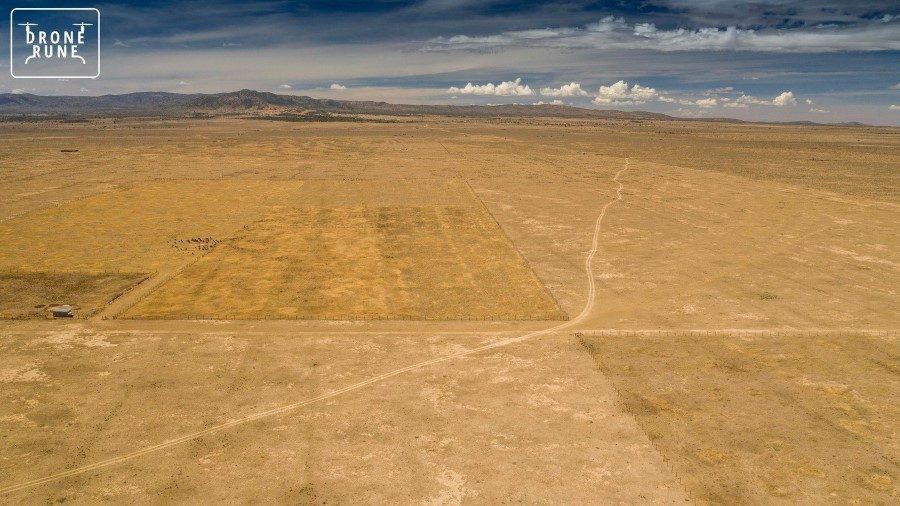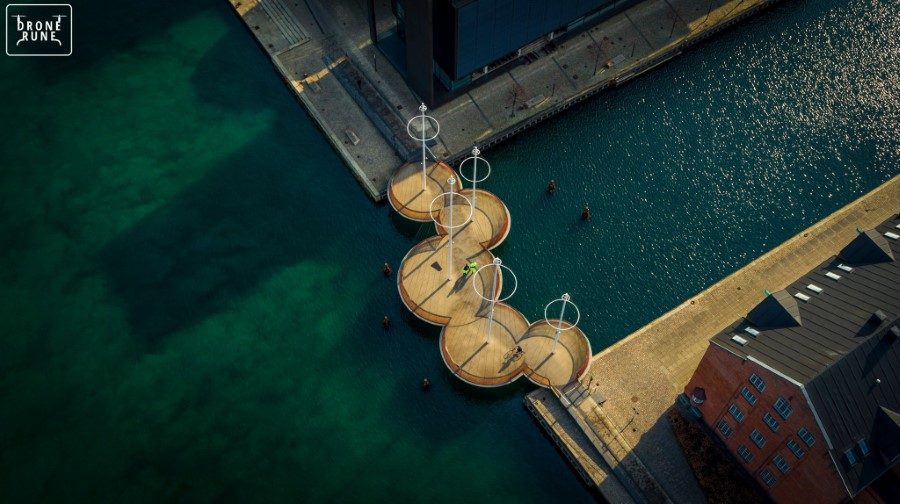Nothing quite beats the feeling of letting your drone take to the skies.
Especially if you’re traveling to a new country – or even continent – the expectation of seeing everything from above for the first time is something everyone who has ever flown a drone will recognize.
So the question that naturally arises is: will you be allowed to bring your drone on the plane?
If the batteries in your drone are under or equal to 100Wh there is a good chance, that your drone is acceptable as carry-on and checked luggage as well. However, there are no single set of regulations (as of time of writing), which every airline agrees upon. Some airlines don’t even have an official policy regarding drones listed on their website yet. Because of this, it always recommend that you reach out to the airline ahead of time, and explain to them which drone you have, where you’re going, and get information on how they want you to transport it.
Let’s take a look at how you can manage to bring your drone on a plane. The detailed discussion below should be of help. You’ll also find a summary of official drone policies from a number of different airlines.
Can I take my drone on a plane?

The photo appears courtesy of DroneRune.dk © Rune Johansen Solgaard
The basic question we have here is whether you can even take your drone on a plane or not. As we’ve mentioned above in the introduction, it’s possible.
However, the regulations and policies might vary according to different airlines, and whether you’re traveling domestic or international. That is, if the airline have a policy at all!
One of the main reasons why so many people are confused about whether they can take drones on planes is the lack of airlines who even mention drones on their online policies.
We can look up policies, regulations, rules, and exemptions online for just about any kind of luggage, but drones are still missing from several major airline websites.
However, there’s still a way to gauge whether you might be able to take your drone on board. This is by checking out the regulations for lithium batteries. These rules usually apply to the personal devices that use such batteries. If they’re allowed on the plane, you have a solid case for your drone as well.
Luckily, you can find the info from a vast number of different airlines regarding their rules for Lithium-Ion batteries in the article below.
Take your drone on a plane as hand luggage
Taking your drone on a plane usually means taking it as part of your carry-on items.
But since drones are still somewhat of a novelty, carrying the drone with you on the plane might subject you to a few questions, raised eyebrows, and quite a bit of suspicion.
Even if the airline staff doesn’t seem cooperative, it is best to simply comply with what they’re saying rather than risk missing your flight altogether.
It also helps to call ahead and ask about the airline policies. If you send an email and get a positive response, make sure to save that reply and take a screenshot of it. This way, you’ll have some proof in case any staff member tries to make things difficult for you.
General advice for taking your drone on a plane as carry-on
When you put your drone and batteries in your carry-on, always make sure they’re well-protected. Even if you don’t hand it over to baggage handler, it might still get quite a few bumps and bruises in the overhead compartment.
Naturally, the drone should always be switched off during the flight.
You might have an easier time getting your drone on a plane if the drone is quite small. The DJI Spark, for example, is a very compact option that doesn’t compromise on performance. If you have something like this, the transition from the airport lobby to the plane might become smoother.
The DJI Mavic Air is another excellent option for traveling, as it folds up for easy portability. With this option, you can take your drone practically everywhere without much hassle.
If you are including your drone in your checked luggage, though, be aware that the risk of damage is only one worry. Customs might open up your bag to check the contents, and no one can guarantee that your drone wouldn’t get lost or misplaced.
Learning about different airlines

Fortunately, we live in an age where communication is a highly important element within most companies’ marketing strategies. Airlines aren’t exempt from this rule; they have to make a profit and overtake their competitors whenever possible.
This is why it shouldn’t be too hard to get in touch with any representative of a major airline and ask them about the policy of bringing drones on planes. You’ll have to hold a while when you call, and an e-mail might get overlooked on the other end. A live chat is a great option, but the robot there might not be able to give you a specific answer.
If getting in touch with the airline you’re considering isn’t proving easy, or if you want to compare several airlines, looking at each in turn is a better idea.
Calling, emailing, or chatting with every airline available could be great pain, so we’ve done some of the legwork for you.
Below is a comparison of the policies, rules, and regulations of many airlines regarding carrying drones onto planes:
Transportation Security Administration (TSA)
When dealing with the TSA, keep in mind that the policies for this entity consider drones as portable, medium-sized electronic devices that are powered by lithium batteries.
The allowance of such batteries makes the drones acceptable too, but there’s a catch. This allowance is only based on certain watt-hour ratings (Wh) for the batteries. For instance:
- Batteries (and, presumably, the devices that carry them) that are under or equal to 100Wh are acceptable as carry-on luggage and checked luggage as well.
- From 101Wh to 160Wh, you need to get approval from the airline to carry anything with such batteries.
- Any battery above 160Wh is forbidden from air travel completely. We don’t recommend that you even consider attempting this, as there’s probably a good reason for this precaution.
As for drones themselves, the TSA recommends that you check that particular issue with your airline. Remember, though, if your battery has the right watt-hour rating, you have the TSA regulations on your side.
AirAsia
Like many airline websites, AirAsia doesn’t have any kind of drone policy for its website right now. This might have changed by the time you read this, so you should go and check first!
There isn’t even a proper policy regarding the carrying of lithium batteries on any of their planes. They do cover hoverboards and similar transportation devices, though. The bad news is that these are completely forbidden.
While this information doesn’t bode well for the allowance of drones, there’s always a chance that you might get a green light if you call ahead. If you’re thinking of choosing this airline for its low fares or quality service, you may also want to take the extra step and see if they’ll allow your drone as well.
Air France
The drone policy of Air France gives us a pleasant surprise. Not only are they one of the few airlines to mention drones in their official regulations, but they also allow certain models on board.
If you have a drone like the DJI Phantom 4, you can easily take it on board your Air France flights. This is because that model has an energy level of only 81.3. Anything with a battery that’s lower than or equal to 100 Wh is allowable here as a carry-on as well as checked baggage.
Since Air France is so kind about its drone policy, we should also do them the courtesy of not packing replacement batteries in our checked baggage. These should be carried with us on the plane.
Air India
Again the drone policy and the battery policy are both not clear in the case of this airline. However, there is a statement that battery cells of electronic devices are fine for carry-on luggage. Spare batteries should ideally go in the checked luggage.
Then again, there’s a PDF document on the same website that states the allowance of Portable Electronic Devices or PEDs as hand or checked baggage only if their lithium batteries aren’t more than 100Wh. Any higher and the passenger will have to get the airline’s approval up front.
Southwest Airlines
If you’re traveling with this airline, it’s good to know that they do allow drones inside international flights if they fulfill certain regulations. These regulations are mostly concerned with the size of the battery you have in the drone as well as any spares.
As of January 2018, this airline allows its passengers to have about 20 lithium-ion batteries at a time. This is good news for drone lovers and anyone who wants to make full use of their PEDs.
No matter what kind of loose or spare batteries you carry here, you have to protect them from the possibility of short circuits. This is why you’re only allowed to have them in your carry-on. The same goes for power banks.
American Airlines
This airline allows you to bring your precious drones on the plane, but only if the batteries aren’t more than 160Wh. You also need a proper box for carrying it, which should ideally be around 22 by 14 by 9 inches at the most.
British Airways
British Airways encourages its passengers to carry their electronic devices in their carry-on luggage or their checked baggage. The decision depends on the convenience and preference of the passenger.
Still, there are certain rules to follow when you’re carrying lithium batteries on this particular airline. For those drones under 100 WH, such as the DJI Inspire 2, you can only keep them in your checked baggage if they’re in the device itself.
This means that the spares need to go in the hand baggage. However, there are just four spare batteries allowed per person.
Batteries between 100 and 160 Wh need approval from the airline. Whether you get this or not depends on the room in the flight, the current season, and even the mood of the airline staff at the time.
Brussels Airlines
This airline’s policy states that any electronic device that’s powered using a lithium battery needs to follow certain rules. Again, the 100Wh regulation applies, with the drone allowed in hand baggage or checked baggage. However, keep in mind that spare batteries are only allowed in hand luggage.
Any battery between 100 and 160Wh needs approval for any kind of luggage. If you don’t get this well in time, you’ll be held up at the airport for a major amount of time.
Delta Drone
We have another airline here that isn’t completely explicit about their policy on drones. Luckily, though, Delta does state that they allow lithium batteries up to and including 160 Wh. This is quite generous, but anything above is strictly off limits.
You can carry your lithium batteries here by checking them in with your baggage or carrying them on the plane. That is, you have this choice if the batteries are installed in a device at this point.
Furthermore, the spare batteries in your hand-carry should only be under 160Wh. If they’re above 100Wh, you’ll only be allowed to carry a couple.

The photo appears courtesy of DroneRune.dk © Rune Johansen Solgaard
EasyJet
The policy here is the same as most airlines we’ve discussed so far. You can have electronic items with lithium batteries on board as long as the batteries come under the 160 Wh limit.
You can only carry spare batteries in your hand baggage. Even then, you may only check them in if they aren’t above 100 Wh.
Emirates
One downside of traveling with Emirates it that there’s no cabin baggage allowed. This is due to some extraordinary security reasons, but you can have a sizeable amount of checked baggage.
As for the batteries of your drones, you’ll have to take them or securely install them in the device. The same policy applies when you’re catching a connecting flight where one of the airlines is Emirates.
Finnair
Finnair allows you to carry your drones on the plane or check them in—as long as they’re without batteries. These batteries have a regulation of their own.
Any battery that has about 2 grams of lithium or more than that is simply not allowed on board in any case. The same goes for those batteries that are above 160 Wh.
If you have any spare batteries with fewer than 2 grams of lithium, you may carry it on board. If you want to check them in, they have to be inside the drone itself. For carrying any batteries between 100 and 160 WH, airline approval is a must.
JetBlue Airlines
The drone policy of JetBlue Airlines accepts them as carry-on or checked baggage, but there are certain stipulations with the former option. You have to make sure the drone fits properly into the overhead bin in the plane or keep it by your feet under the seat.
If you do choose to carry the drone onto the plane yourself, you must ensure that its battery is installed properly.
Naturally, the drone should be switched off during the flight.
As for the batteries, you can carry two spares if they’re up to 160 watt-hours. You should wrap them in a plastic bag or protect them with tape to avoid any danger.
The Takeaway: It’s time to choose a suitable airline
The comparison above will hopefully help you decide which airline is best for your traveling needs when you have drones to transport.
Once you do shortlist a few likely options, though, our best advice will always be to call ahead and check with the airline first.
There have been cases of drones held back by airline staff until the owners are returning from their trip.
It would be a shame if you were deprived of your drone throughout your trip, so it’s always best to be safe!
Call ahead, plan head, and research the updated policies before taking the taxi to the airport.
Good luck, bon voyage, and feel free to share some of your amazing drone footage in the comments below.

